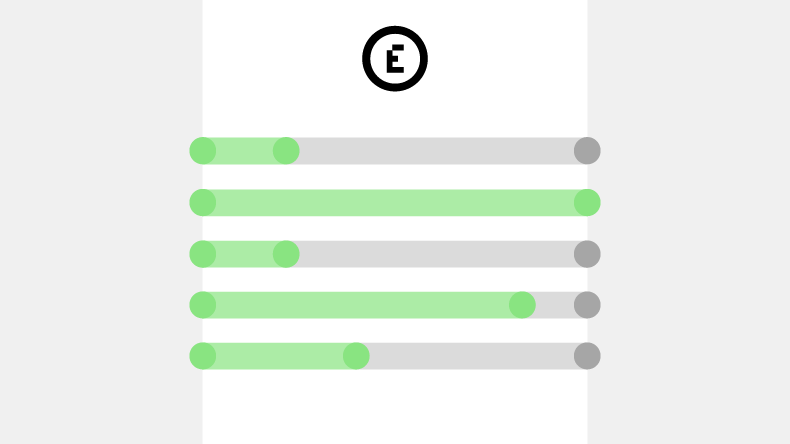Cyber Security for Insurance Companies

The finance sector in the UK faces a growing cyber threat. Firms in this industry handle sensitive financial data for clients, making them attractive targets for cyber criminals.
The financial and professional services (FPS) industry is the engine room driving UK growth. With 2.5 million people employed across the UK – over 1.1 million in financial services and more than 1.3 million in related professional services – the industry produced £278bn of economic output, 12% of the entire UK’s output (HM Treasury).
This financial magnitude not only underscores the finance sector's critical role but also underscores the necessity for increased vigilance and strong safeguards to preserve both the sector's economic significance and the sensitive information it holds.
This brings a number of challenges to the evolving landscape of cyber security for insurance companies.
Contents
Let’s take a look at the key challenges:
4 Key Cyber Security Challenges Facing The finance Sector
#1 Advanced Persistent Threats (APTs)
Advanced Persistent Threats (APTs) present a formidable challenge in the finance sector, characterised by their stealthy, sophisticated, and long-term nature.
These attacks involve highly skilled adversaries who gain unauthorised access to financial networks, maintaining a foothold for prolonged periods to extract sensitive data. The complexity of these threats often evades conventional security measures, making early detection and response difficult.
The persistent nature of APTs requires financial institutions to employ advanced security strategies, including real-time monitoring, AI-driven threat detection, and continuous employee training.
#2 Phishing & Social Engineering Attacks
Phishing and social engineering attacks represent a significant cyber security challenge for the finance sector, exploiting human vulnerabilities to breach security.
These tactics deceive employees into revealing sensitive information or granting access to secure systems, bypassing traditional cyber security measures. The sophistication of these attacks, often tailored and highly convincing.
Addressing this challenge involves comprehensive employee training and awareness programs, alongside robust verification protocols. Financial institutions must foster a culture of security awareness, where staff are equipped to recognise and respond to these deceptive techniques.
#3 Regulatory Compliance & Data Protection
Regulatory compliance and data protection pose a complex challenge for the finance sector, requiring adherence to a dynamic landscape of legal and regulatory requirements.
Financial institutions must navigate and implement policies in line with evolving regulations like GDPR, often involving significant changes to data handling and processing practices. This task is complicated by varying international standards and the need for continuous adaptation.
Overcoming this challenge demands a proactive approach, with regular training for staff, comprehensive audits, and investment in systems capable of ensuring compliance.
#4 Cyber Security Skill Shortage
The cyber security skill shortage presents a critical challenge for the finance sector, impacting its ability to effectively combat evolving cyber threats.
This gap is marked by a scarcity of qualified cyber security professionals, hindering the development and implementation of robust security strategies. The rapid advancement of cyber threats outpaces the available expertise in many financial institutions.
To address this issue, the sector must focus on nurturing talent through dedicated training programmes, partnerships with educational institutions, and embracing innovative technologies like AI for security automation. Investing in skill development and adopting new approaches are key to mitigating the risks.
Top 3 strategies to protect your business
#1 Engaged & informed leadership
It is crucial for the senior management of insurance companies to be actively engaged in shaping and comprehending their cyber security strategy.
This top-level involvement establishes the importance of cyber security throughout the company, underscoring its role in safeguarding client data and the business itself.
Utilising resources such as the NCSC’s Cyber Security Toolkit for Boards is essential. This toolkit offers tailored guidance and tools to help leaders understand and tackle cyber security threats effectively. It serves as more than just a resource; it's a strategic guide that demystifies technical language, aligning it with executive decision-making.
Below are some of the benefits of an engaged and informed leadership:
- Enhanced risk management
- Stronger security posture
- Improved compliance
- Fostering a culture of security
- Client confidence and trust
#2 Investment in staff training & awareness
Ensuring that employees in insurance companies receive thorough training and continuous awareness programmes is essential in preparing them for the ever-changing cyber threat environment.
This strategy guarantees that all staff members are capable of recognising and addressing potential security issues efficiently. It's vital to cultivate an organisational culture where cyber security is considered a collective duty. Consistent awareness efforts maintain cyber security as a key focus in your team's daily activities.
Given the rapid evolution of cyber threats, continual education is critical. Frequent updates and refresher courses are necessary to keep your team informed and proactive, ensuring that the company's overall cyber security knowledge is up-to-date and effective.
We have a list of good cyber security tips for employees. Additionally, you could look into Cyber Aware from the NCSC.
Below are some of the benefits of investing in staff training and awareness:
- Reduced risk of breaches
- Enhanced threat detection
- Strengthened firm reputation
- Improved compliance
- Proactive risk management
#3 Cyber Essentials certification
As decision-makers in the insurance sector, safeguarding sensitive client information and upholding your company's operational integrity is paramount.
Implementing the Cyber Essentials programme provides a robust foundation for protecting against common online threats, while also ensuring compliance with industry regulations.
Cyber Essentials, endorsed by the government, offers a cost-effective and straightforward method to enhance your cyber security posture. It encompasses five key technical control areas: Firewalls, Secure Configuration, User Access Control, Malware Protection, and Security Update Management.
Below are some of the benefits of Cyber Essentials certification:
- Enhanced cyber threat protection
- Improved client confidence
- Reduced insurance premiums
- Compliance with contractual requirements
- Strengthened firm reputation
Where’s the best place to start for your business to obtain Cyber Essentials certification?
What is a Cyber Essentials Gap Analysis?
A Cyber Essentials Gap Analysis provides a robust evaluation of your existing security infrastructure, highlighting key areas that require attention while setting the stage for targeted action and compliance.
This will help to:
- Identify your organisation's alignment to the UK Government’s security standards.
- Provide a detailed report with recommendations for achieving compliance.
- Develop a focused action plan to guide your journey toward Cyber Essentials certification.
What are the benefits of a Cyber Essentials Gap Analysis?
Let’s take a look at some of the benefits of a Cyber Essentials gap analysis:
#1 Identifying security weaknesses
Identify precise areas where your firm’s cyber security practices may not meet the recommended standards. This focused analysis helps you recognise vulnerabilities and implement necessary improvements.
#2 Tailored improvement strategies
Receive custom-tailored improvement recommendations that are invaluable for shaping a targeted strategy to fortify your agency’s cyber security defences in the most effective manner.
#3 Enhancing cyber security readiness
Addressing the identified gaps enhances your firm's preparedness against prevalent cyber threats, a critical step in an evolving landscape where threats are continually growing in sophistication and frequency.
#4 Building client trust and confidence
Demonstrating that you have conducted a thorough Cyber Essentials Gap Analysis and acted upon its findings reassures clients of your commitment to protecting their sensitive data.
#5 Aligning with industry best practices
Align your cyber security practices with industry-leading standards. This alignment not only enhances client confidence but also positions your firm as a responsible and forward-thinking player in the finance sector.
#6 Preparation for Cyber Essentials certification
Establish a foundation towards Cyber Essentials certification. Ensure your firm meets essential criteria and paves a straightforward path towards acquiring this significant accreditation.
Final Thoughts
Reflecting on these points, it's important for decision-makers in insurance companies to recognise the value of a proactive stance on cyber security.
By adopting these strategies, your company can secure its future, safeguard client interests, and uphold operational integrity in a digital landscape that's constantly evolving.
We really hope you enjoyed our quick guide to the evolving landscape of cyber security for insurance companies.
Now we’d like to hear from you:
Do you have any further questions about this topic?
Are you considering Cyber Essentials certification?
Either way, let us know your thoughts.
Empower your business with a comprehensive Cyber Essentials Gap Analysis
Schedule a consultation with one of our experts and start protecting your business with a Cyber Essentials gap analysis.
Back to the blog.
From our blog
View articlesSign up to our newsletter
The latest insights, articles, and resources direct to your inbox.






